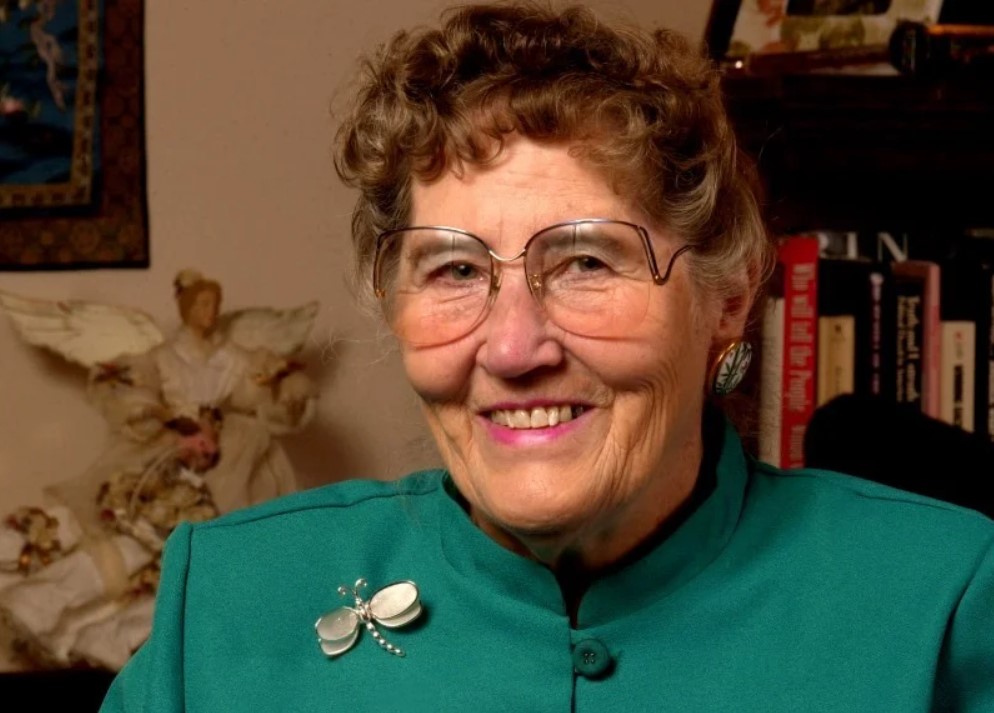Midge Miller of Madison, Wisconsin, passed away several springs ago. She was 86. Like most of you, I did not know her. I saw her speak only once at a local public hearing on a plan to re-invest in our nation’s nuclear weapons manufacturing facilities. She could not have weighed more than a hundred pounds. She walked slowly to the microphone with a back that could no longer fully straighten. But she was far more force than frailty. Her voice and her message did not equivocate as she argued against this additional spending.
Midge Miller was a familiar, longtime nuclear weapons abolitionist in Madison. Across the country, in every city and most small towns, are others who have long shared Midge Miller’s concerns for our potential nuclear self-destruction. But already, I am glossing over their passion. I’m being too indirect – and surely they would scold me. These are people who long ago recognized the madness of our nuclear ways.
President Ronald Reagan, from the small town of Dixon, Illinois, became one of them; became convinced that only with the elimination of nuclear weapons could we assure the safety of our children and grandchildren. These are smart citizens who do not need to dissect papers on nuclear deterrence theory to know that the nuclear proponents are wrong. They understand from a deeper place, the fallacy of permanent existential terror as a lasting solution for peace. Every religious leader in the world is in their camp. They are on Midge’s side. They have her spiritual back.
Over their long lives, their nuclear abolition efforts have been derided as being – you chose your favorite term – naïve, quixotic, weak, Kumbaya-singing, fantasy, unachievable. Midge and the others ignored their critics, not even allowing these cynical words to register as speed bumps as they drove their cause forward. They had the moral right-of-way. They held another candlelight vigil, called their elected representatives, occasionally ran for office, and wrote their local newspaper editor one more letter.
While it is often difficult to see incremental progress on a sixty-five year project, the effect of their prolonged effort is cumulative. This is the languid path a brighter future tends to take – whether it’s the abolition of slavery, achieving women’s suffrage, or banning our most lethal weapons – none comes easily, none comes quickly. Entire generations must change their thinking.
The complete global elimination of nuclear weapons, which just a few years ago was considered impossible, is rapidly looking to be the logical, if not the only, long-term solution for halting nuclear proliferation and its incumbent dangers. While Iranian and North Korean nuclear efforts hog today’s headlines, these may well be the last sparks of a dying nuclear game. We are quickly approaching a tipping point in global nuclear weapons’ policy.
This ten part series, Our Nuclear-Free Opportunity, will explore the top 10 reasons why a world free of nuclear weapons is not only achievable – it may now only be a decade or so away. Thanks in no small measure to the echoing voices of the Midge Millers from all around the world.
Top Reasons Why a World Free of Nuclear Weapons is Now Achievable
- Interdependence of global economies and financial systems.
- Instant global communications and social networking.
- Man’s moral evolution – two steps forward, one step back.
- Poor ROI from nuclear weapons spending.
- The fallacy of deterrence in a proliferated world.
- Building off of past arms control successes.
- Thank you, Ronald Reagan and Mikhail Gorbachev.
- Simultaneous alignment of most stakeholders.
- The powerful motivation of self-preservation.

